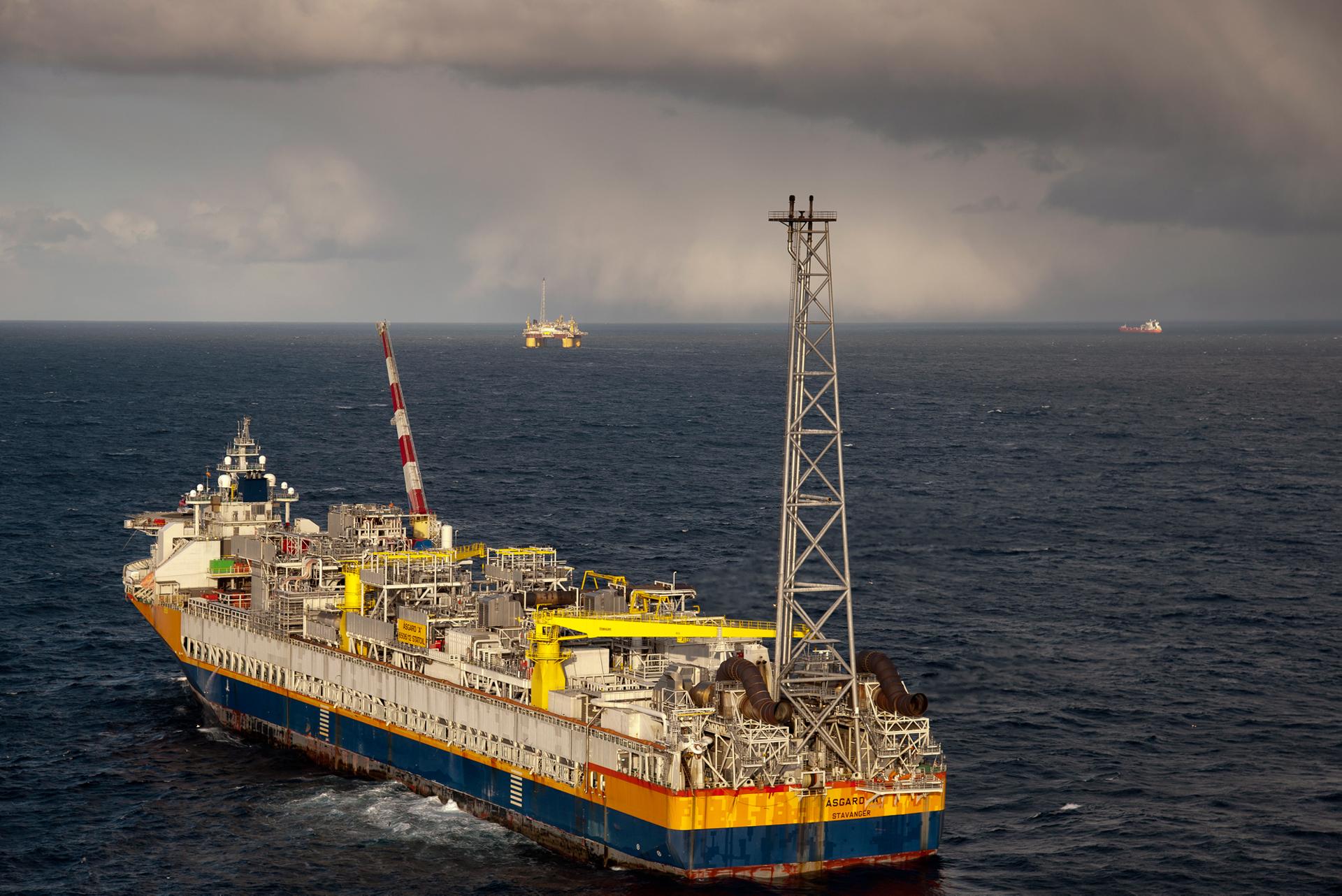PRODUCTION FROM THE FIELD
Source: Norwegian Offshore Directorate
Print illustration Download data PRODUCTION FROM THE FIELD Download PDF Download as image (PNG)
High Contrast Mode
Development
Åsgard is a field in the central part of the Norwegian Sea. The water depth is 240-300 metres. Åsgard was discovered in 1981, and the plan for development and operation (PDO) was approved in 1996. The Åsgard field includes the accumulations Smørbukk, Smørbukk Sør, Midgard and Blåbjørn. The field has been developed with subsea wells tied-back to a production, storage and offloading vessel (FPSO), Åsgard A, and a floating, semi-submersible facility for gas and condensate processing, Åsgard B. The gas centre is connected to a storage vessel for condensate, Åsgard C. The production started in 1999. An amended PDO for a subsea template at Smørbukk Sør was approved in 2004. A PDO for subsea gas compression at Midgard was approved in 2012, and the facility started operation in 2016. PDO exemptions for Blåbjørn and Smørbukk Nord were granted in 2023. The Åsgard facilities are an important part of the Norwegian Sea infrastructure. The Mikkel and Morvin fields are tied to Åsgard B for processing, and gas from Åsgard B is sent to the Tyrihans field for gas lift. The Trestakk field is tied-back to Åsgard A.Reservoir
Åsgard produces gas and considerable amounts of condensate mainly from Jurassic sandstone at depths of as much as 4850 metres. The reservoir quality varies in the different formations, and there are large variations in the reservoir properties between the four accumulations. Smørbukk is in a rotated fault block and contains gas, condensate and oil in the Åre, Tilje, Tofte, Ile and Garn Formations. Smørbukk Nord contains gas in the Ile and Garn Formations. Smørbukk Sør contains oil, gas and condensate in the Tilje, Ile and Garn Formations. The Midgard gas accumulation is divided into four structural segments, with the main reservoir in the Ile and Garn Formations. Blåbjørn contains oil at a depth of 3100 metres in the Upper Cretaceous Lysing Formation. The Blåbjørn reservoir is located above Smørbukk Sør.Recovery strategy
Smørbukk and Smørbukk Sør are produced mainly by pressure depletion, with minor pressure support by gas injection. Smørbukk Nord, Midgard and Blåbjørn are produced by pressure depletion.Transport
Oil and condensate are temporarily stored at Åsgard A, then shipped to shore by tankers. The gas is exported through the Åsgard Transport System (ÅTS) to the terminal at Kårstø. The condensate from Åsgard is sold as oil.Status
Work is ongoing to increase the recovery from the field, with focus on a further reduction of inlet pressure on the facilities and identification of new targets for infill drilling. A development project for enabling lower inlet pressure on Åsgard B is ongoing. Subsea gas compression has accelerated and prolonged gas production at Åsgard. Phase 2 of the subsea gas compression development is ongoing. New tie-ins to Åsgard, such as Blåbjørn and Smørbukk Nord, contribute to prolonging the lifetime of the facilities.ACCRUED INVESTMENTS IN NOMINAL NOK
Source: Norwegian Offshore Directorate
Print illustration Download data ACCRUED INVESTMENTS IN NOMINAL NOK Download PDF Download as image (PNG)
High Contrast Mode
NORWEGIAN OFFSHORE DIRECTORATE'S CURRENT RESOURCE ESTIMATES
All numbers in mill. Sm3 o.e.
Print table Download data NORWEGIAN OFFSHORE DIRECTORATE'S CURRENT RESOURCE ESTIMATES
High Contrast Mode
Visit the Norwegian Offshore Directorate's fact pages for more information
